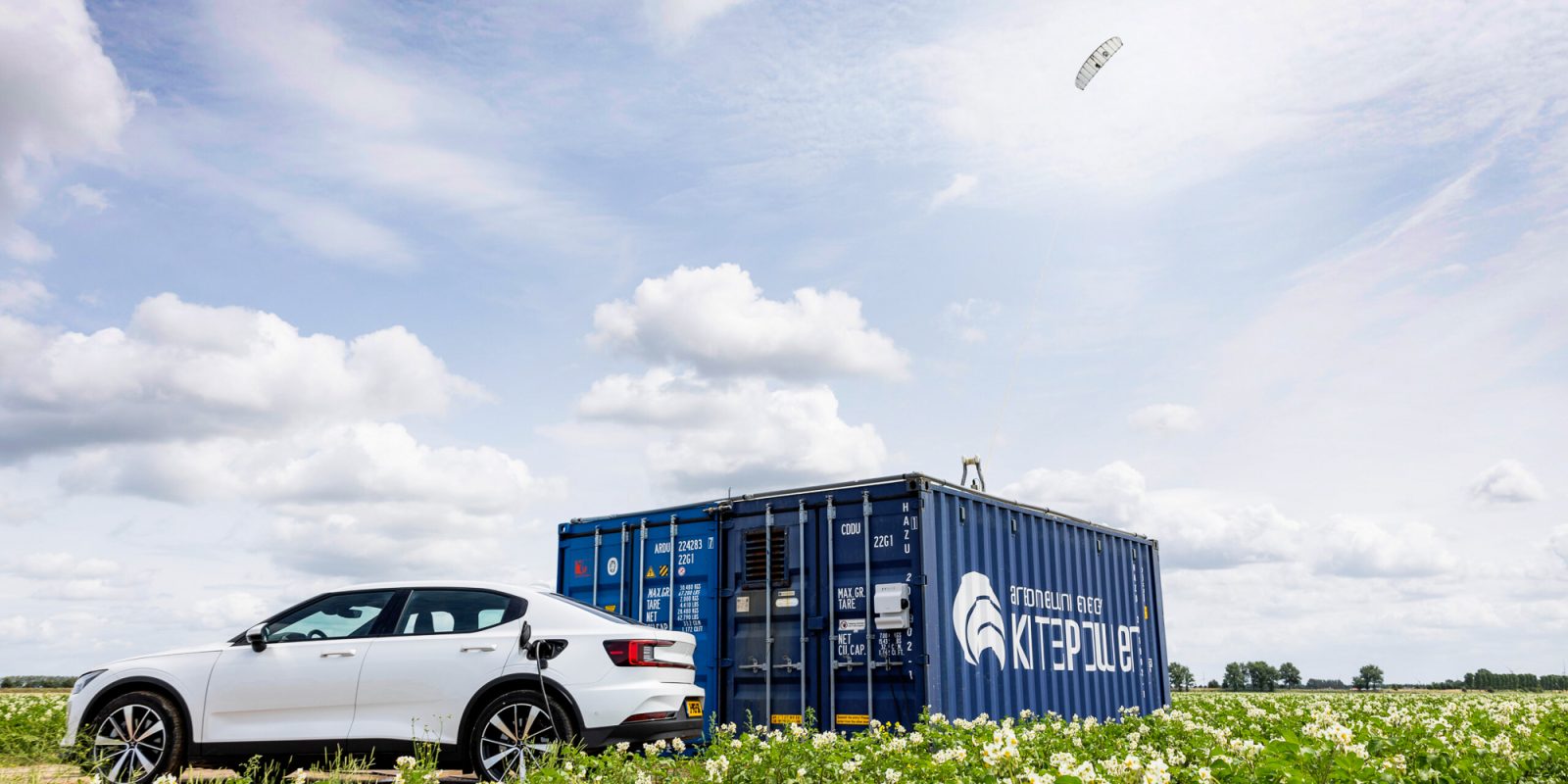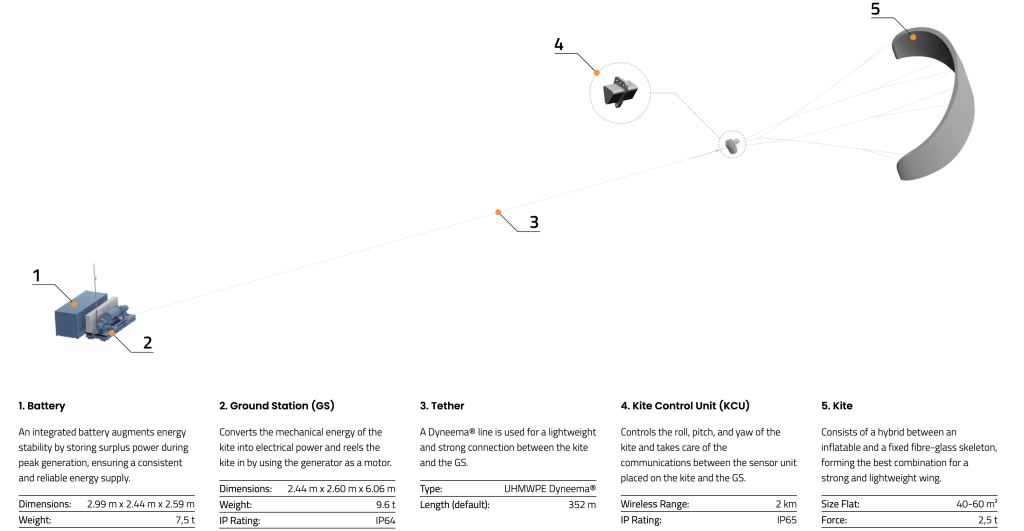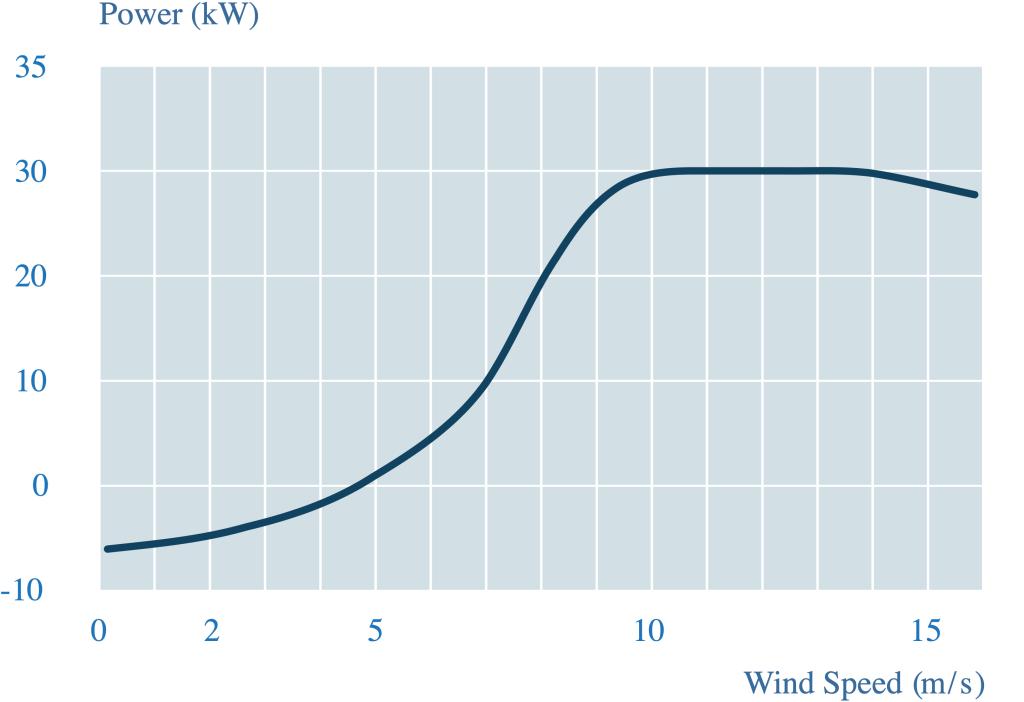
If you had to read that headline twice, let me assure you: I had to read Kitepower’s website a few times myself. The concept of harnessing the wind for power is positively ancient, but it usually comes in the form of a fixed wind-catching surface rotating a driven mass (aka a windmill). Kitepower is doing something very different. The best way to describe it is probably a “wind winch.”
The Kitepower Hawk — which is now available to order — combines a few key elements. The first is a 400kWh battery pack inside a shipping container, which comprises the storage and distribution portion of the system. That battery array can pump out up to 330kW of power at peak and is designed to run for around 10 hours under typical operating conditions. The second and third major elements are a reel system (think of it as a winch), which releases and retracts a tether and the aforementioned kite.

The kite is attached to the end of the tether, and as the wind pulls the kite into the air (in an elaborate flight pattern designed to maximize the duration of the “pull” cycle), that pulling force unwinds the reel. The resultant mechanical force, very much like the spinning of a wind turbine, is then harvested as electricity. Finally, the system then uses electricity to pull the kite back in, but in a straight-line trajectory that uses far less power than the pulling force generates.
The key figures claimed here are that the Hawk, at maximum efficiency, generates 40kW of electricity when in the unwind cycle. When the kite is being wound back in, it consumes 10kW of electricity. The system spends roughly 80% of its time in the unwind cycle and just 20% reeling the kite back in, and Kitepower claims the system, therefore, produces the net equivalent of 30kW of continuous power when in operation.
According to Kitepower, the amount of wind necessary to power this whole thing at peak efficiency is lower than you’d expect — just over 22 mph (10 m/s). That said, wind speeds over 30 mph or so start to have a negative effect on system efficiency; 20-30 mph is the “sweet spot.”

The advantages of a system like this may not be totally obvious at first when compared to a traditional wind turbine or solar generator. Isn’t this a whole lot of mechanical complexity and uncertainty to bring into the business of power generation?
Top comment by Doggydogworld
I remember reading about the original proof of concept tests ~15 years ago. That kite flew a figure 8 pattern. Airspeed was much higher than wind speed, kind of like those Chinese fighting kites.
This probably costs $500k-1m for a mere 30 kW. Grid connected big turbines cost about $1m per 1 MW (30x more power, but w/o storage). It's clear kite math only works for remote, off-grid sites as mentioned in the article.
The mobility is appealing. If you have to break camp every few months or even every year you can't be taking down and transporting a huge tower turbine.
It looks like the kite starts to generate power at 5 m/s, about 11 mph. That's pretty mild at altitude (the tether is 300m+, so maybe 100m operating height). 20 kW average power is available at 8 m/s and the full rated 30 kW at 10 m/s.
Kitepower’s appeal, though, is to the kind of environments where costly and complex wind turbines and solar may be difficult to deploy or cost-prohibitive. Island communities, remote worksites, and seasonal agriculture are all potential areas where the Hawk could be a game-changer, replacing dirty, noisy diesel generators that must be constantly refueled.
Because of the flight pattern of the kite, you’ll need to be confident that the airspace around the Hawk system will be clear during operation. And the level of wind is obviously going to be a big factor here. But I think the coolest thing about this system is that the portion actually harvesting the energy — the kite — is almost certainly the cheapest of the major components. It’s literally just a fiberglass skeleton parachute, and in the event you lose one to a storm or some other unforeseen event, you can just attach a new kite. I doubt they’re cheap as an objective cost to an individual, but they’re probably way cheaper than replacing an entire wind turbine that gets knocked out in a hurricane.
The other big advantage here is mobility — Kitepower’s system can be deployed anywhere you can drop a shipping container, and that opens a whole host of locations up that would otherwise be cost-prohibitive for wind-power generation. Kitepower also isn’t the only name in the game, with German startup EnerKite exploring a similar solution.
For more, check out Kitepower’s release. (News via Electrive)
FTC: We use income earning auto affiliate links. More.

Comments